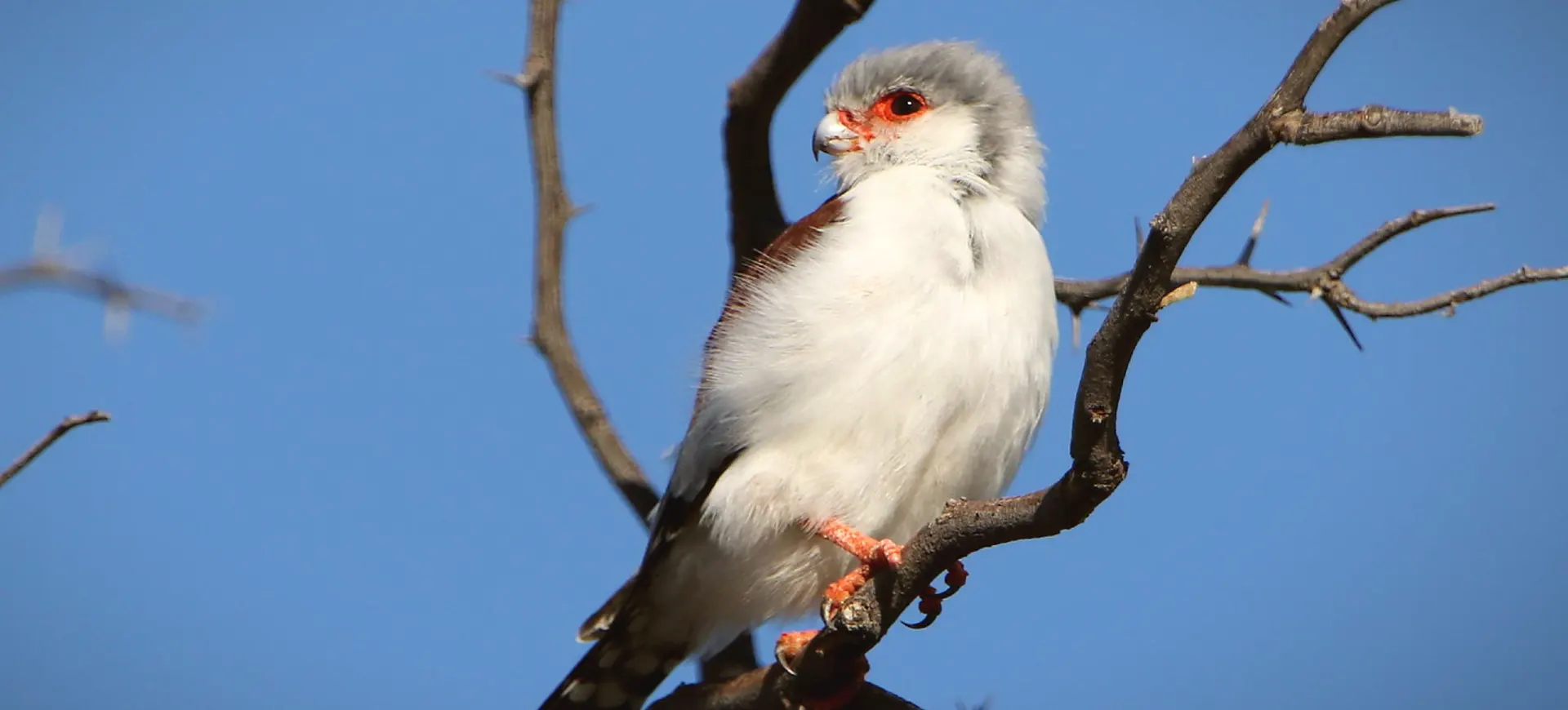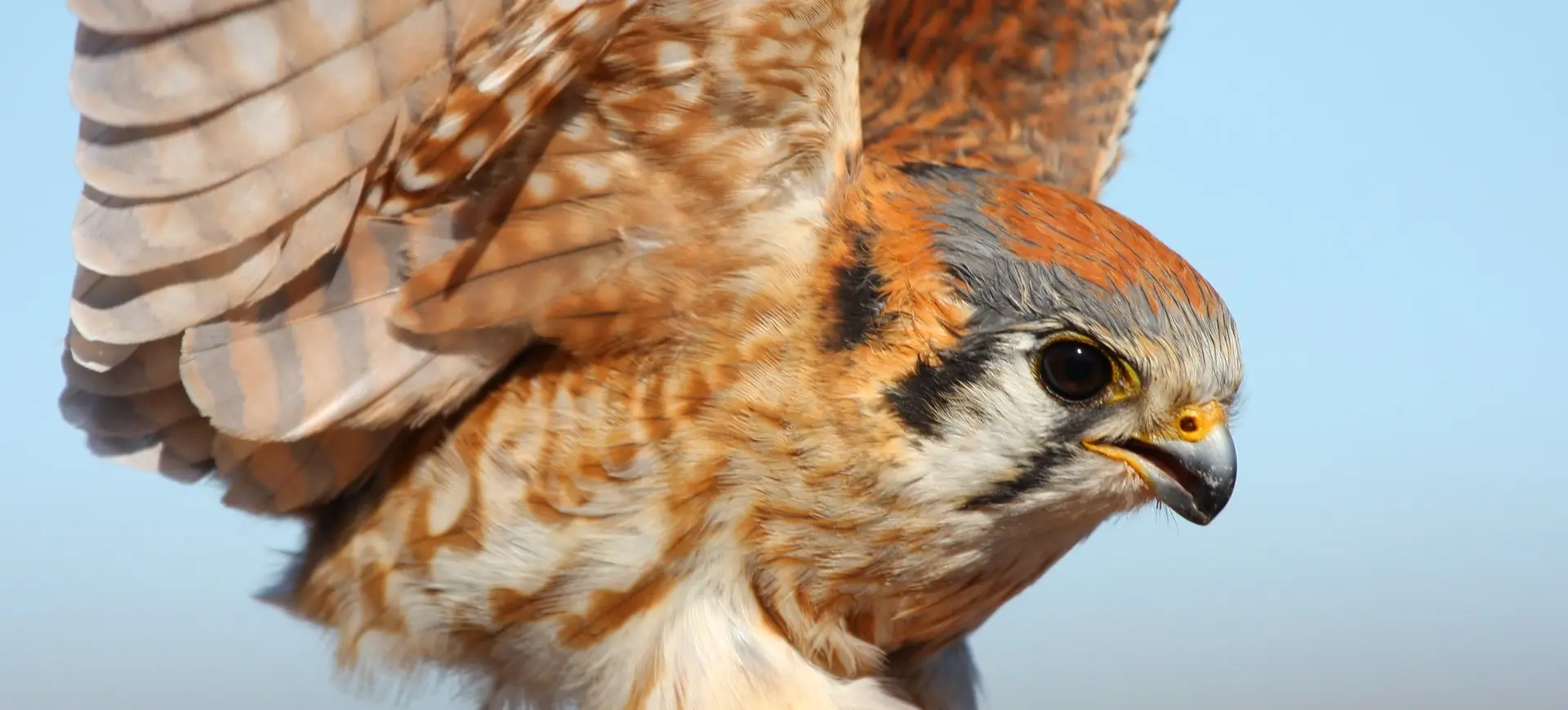Overview
The Crested Caracara (Caracara plancus) is a distinctive bird of prey known for its striking appearance and unique behaviors. It has a large body, long legs, and a broad, flat head with a hooked bill, resembling a cross between a hawk and a vulture. The adult’s plumage is mainly black and white, with a dark cap, a white neck and tail, and a patch of bare, red skin. Its wings are broad and rounded, providing powerful, steady flight, and it’s often seen walking on the ground, unlike many other raptors.
Native to the Americas, the Crested Caracara is a versatile scavenger and predator, feeding on carrion and hunting live prey. It’s often found in open or semi-open landscapes, including savannas, grasslands, and scrublands. This raptor is known for its intelligence and resourcefulness, using tools like sticks to dislodge prey and following larger predators to scavenge leftovers. Its striking call, a loud, repeated “cackle,” is distinctive among birds of prey and contributes to its unique character.
The Crested Caracara symbolizes national pride in Mexico, prominently featured in folklore and the country’s coat of arms. Despite its fierce appearance, it is relatively approachable and less shy around humans than other raptors. These birds are monogamous and territorial, often seen in pairs or small family groups. They perform elaborate aerial displays during courtship, showcasing their agility and strength.
Taxonomy
Kingdom
Phylum
Class
Order
Family
Genus
Species
Sub Species
Type
Physical Description:
The Crested Caracara is a large, robust bird with a body length of about 19-23 inches and a wingspan of 4 to 4.5 feet. It’s immediately recognizable by its striking black and white plumage and prominent crest of feathers on its head. The face is bare and red, with a hooked, blue-tipped beak ideal for tearing flesh. Its legs are long and strong, adapted for walking and running on the ground, a unique trait among birds of prey.
Juvenile Caracaras are browner and lack the sharp contrasts of the adults, with a paler, streaked chest and a less defined facial pattern. As they mature, their plumage darkens, and their facial skin becomes more vividly colored. The bird’s build allows for powerful flight and terrestrial agility, making it a versatile hunter and scavenger. The Crested Caracara’s physical attributes reflect its adaptability to various environments and its role as a predator and scavenger.

Lifespan: Wild: ~10 Years || Captivity: ~25 Years

Weight: Male & Female: 1.5-3.5 lbs (0.7-1.6 kg)

Length: Male & Female: 19-23 inches (48-58 cm)

Height: Male & Female: 19-23 inches (48-58 cm)

Wingspan: Male & Female: 48-56 inches (122-142 cm)

Top Speed: 25-30 mph (40-48 km/h) in flight
Characteristic:
Native Habitat:
Crested Caracaras favor open or semi-open landscapes such as savannas, grasslands, scrublands, and the edges of forests. They are found from the southern United States through Central America and into South America, adapting to various environments within this range. These birds prefer areas where they can forage on the ground, such as pastures, cultivated fields, and other open areas, but they also need perches and nesting sites, often found in scattered trees or man-made structures.
In their native habitat, Crested Caracaras are often seen perched on fences, poles, or trees, scanning the ground for food. They are not forest dwellers but utilize the edges of woodlands and other areas with some tree cover. Their adaptability to different environments, including human-altered landscapes, has allowed them to maintain stable populations in many parts of their range.
Biomes:
Biogeographical Realms:
Continents:
Countries:
Diet:
Diet & Feeding Habits:
The Crested Caracara is an opportunistic feeder with a varied diet that includes carrion, small mammals, reptiles, amphibians, birds, fish, and invertebrates. It uses its long legs to walk and run on the ground, searching for food, and will often scavenge alongside vultures. However, it is also a capable hunter, taking live prey by surprise or using stealth and speed.
Caracaras are intelligent and resourceful, sometimes using tools or debris to access food. They follow farmers and tractors to catch animals disturbed by the activity. In some regions, they are seen picking through human garbage, demonstrating their adaptability. Their feeding habits are an excellent example of their ability to exploit various food sources, making them resilient in changing environments.
Mating Behavior:
Mating Description:
Crested Caracaras are monogamous and form long-term pair bonds. During the breeding season, pairs engage in spectacular aerial displays, including mutual chasing, diving, and rolling in the air. They also perform ground displays, such as bowing to each other with raised wings and calling loudly. These rituals reinforce the pair’s bond and establish their territory.
Nesting sites are usually in trees or man-made structures, where the pair builds a large nest of sticks and debris. The female typically lays 2 to 3 eggs, which both parents incubate. After hatching, both parents are involved in feeding and protecting the chicks. The young fledge at around 8 to 10 weeks but may remain with the parents for several more months, learning to hunt and survive.
Reproduction Season:
Birth Type:
Pregnancy Duration:
Female Name:
Male Name:
Baby Name:
Social Structure Description:
Crested Caracaras are generally solitary or found in pairs, especially during the breeding season. They may gather in larger groups when feeding, especially at abundant food sources like landfills or during insect outbreaks. While they are territorial during the breeding season, they can tolerate other Caracaras when feeding.
Their social interactions are complex, involving a range of vocalizations and body language. During breeding, pairs establish strong bonds through elaborate displays and mutual preening. Understanding their social structure is crucial for conservation, as it informs habitat management and protection efforts.
Groups:
Conservation Status:
Population Trend:
Crested Caracaras are widespread and relatively common within their range, though their populations can be patchy depending on local conditions. They are adaptable and resilient, maintaining stable populations in many areas despite land use and habitat changes. In some regions, they are quite common and easily observed; in others, they may be rare or only seasonally present.
While not currently considered at risk, Crested Caracaras face threats from habitat loss, especially due to agricultural expansion and urban development. They also face risks from secondary poisoning, collisions with vehicles, and illegal shooting in some areas. Conservation efforts focus on habitat protection and reducing human-induced mortality.
Population Threats:
The primary threats to Crested Caracaras include habitat loss due to agricultural expansion, urban development, and changes in land use that reduce the availability of foraging and nesting sites. Collisions with vehicles are a significant mortality factor, especially for birds feeding on roadkill. Secondary poisoning from rodenticides and pesticides can also impact their populations.
Crested Caracaras are persecuted in some areas due to the mistaken belief that they significantly impact livestock and game species. Climate change may also impact their populations indirectly by affecting prey availability and habitat conditions. Conservation efforts are essential to mitigate these threats and ensure the species’ long-term survival.
Conservation Efforts:
Conservation efforts for Crested Caracaras include habitat protection and management to ensure they have access to sufficient foraging and nesting areas. Educational programs help reduce persecution and raise awareness of their role as scavengers and predators in the ecosystem. Monitoring and research are ongoing to better understand their ecology and inform conservation strategies.
In some areas, efforts are being made to reduce vehicle collisions and mitigate the impact of pesticides and rodenticides. International cooperation is essential, as the birds’ range extends across multiple countries. Conservationists are working to maintain healthy populations through habitat protection, education, and research.
Additional Resources:
Fun Facts
- The Crested Caracara is also known as the “Mexican Eagle” and is featured on Mexico’s national emblem.
- They use tools like sticks to dislodge prey from hard-to-reach places.
- Despite being a falcon, their behavior and diet are more similar to vultures.
- Crested Caracaras are strong fliers and very comfortable walking and running on the ground.
- They have a distinctive, loud call that sounds like a rattle, which is unusual for birds of prey.
- In flight, they hold their wings flat, like a board, which is a key identification feature.
- They are one of the few birds of prey regularly seen scavenging in groups.
- Similar to a turkey, their bare facial skin changes color with their emotional state.
- Crested Caracaras are very curious and will investigate anything new in their territory.
- They are known for their intelligence and problem-solving abilities, demonstrating complex behaviors in the wild.













